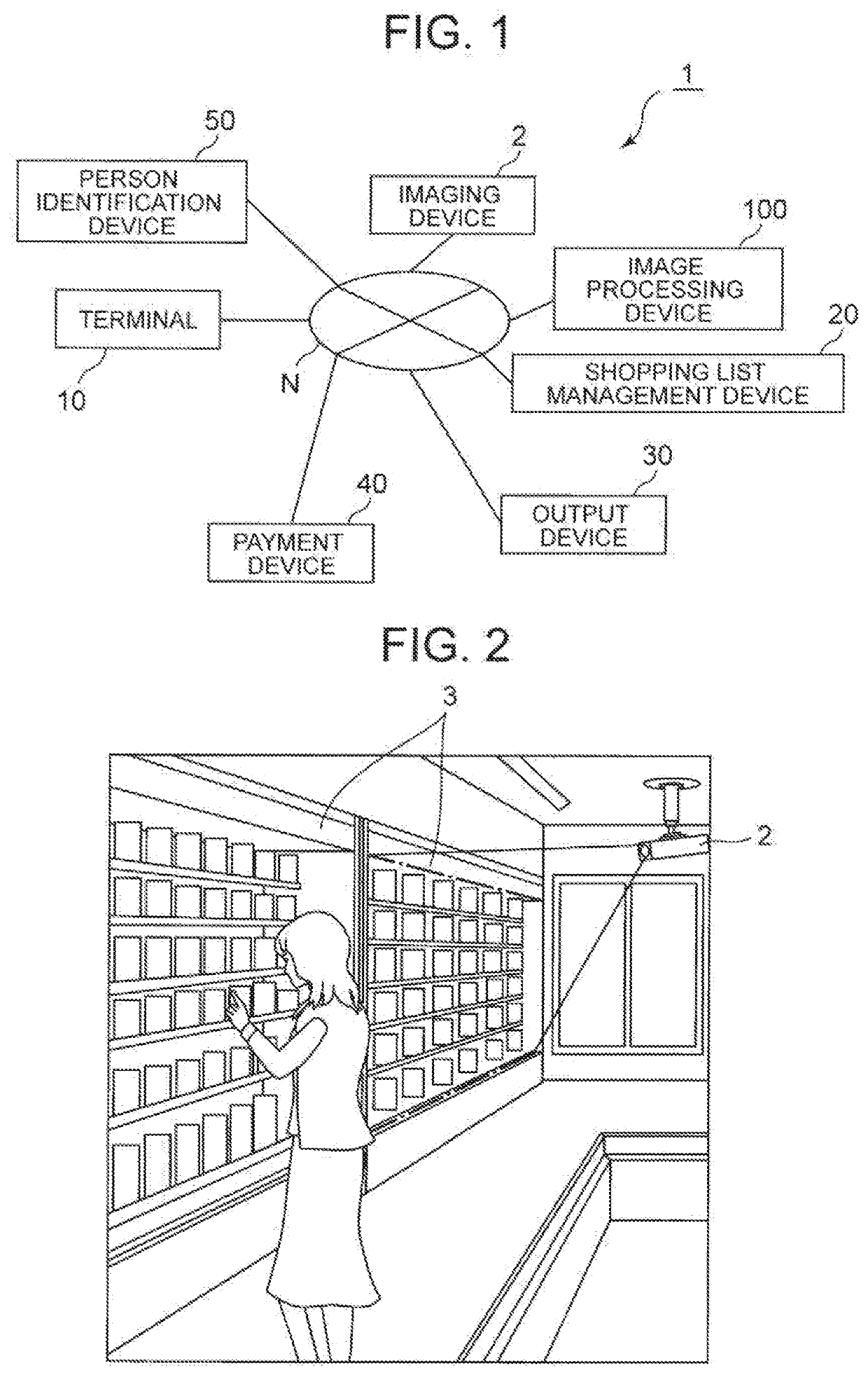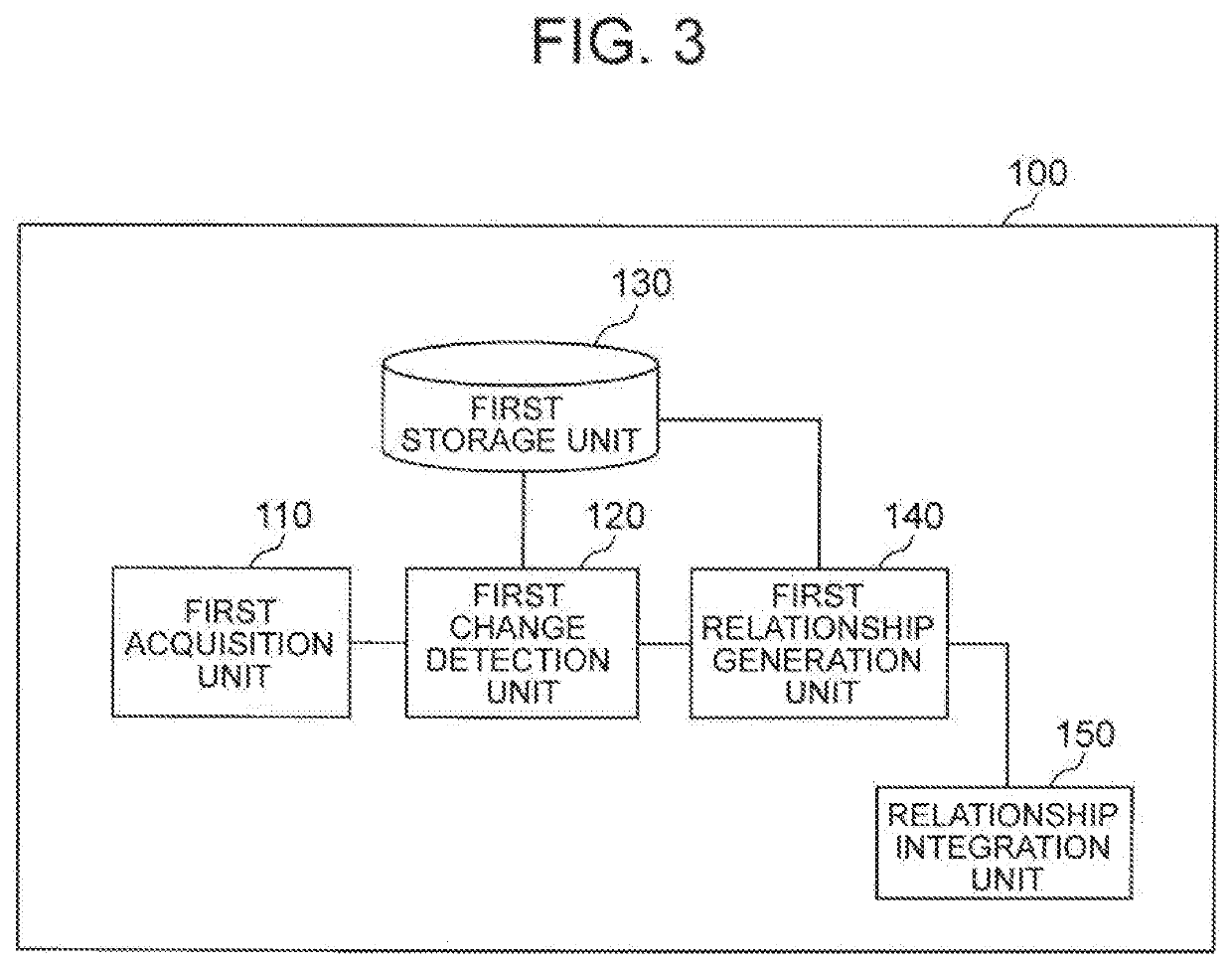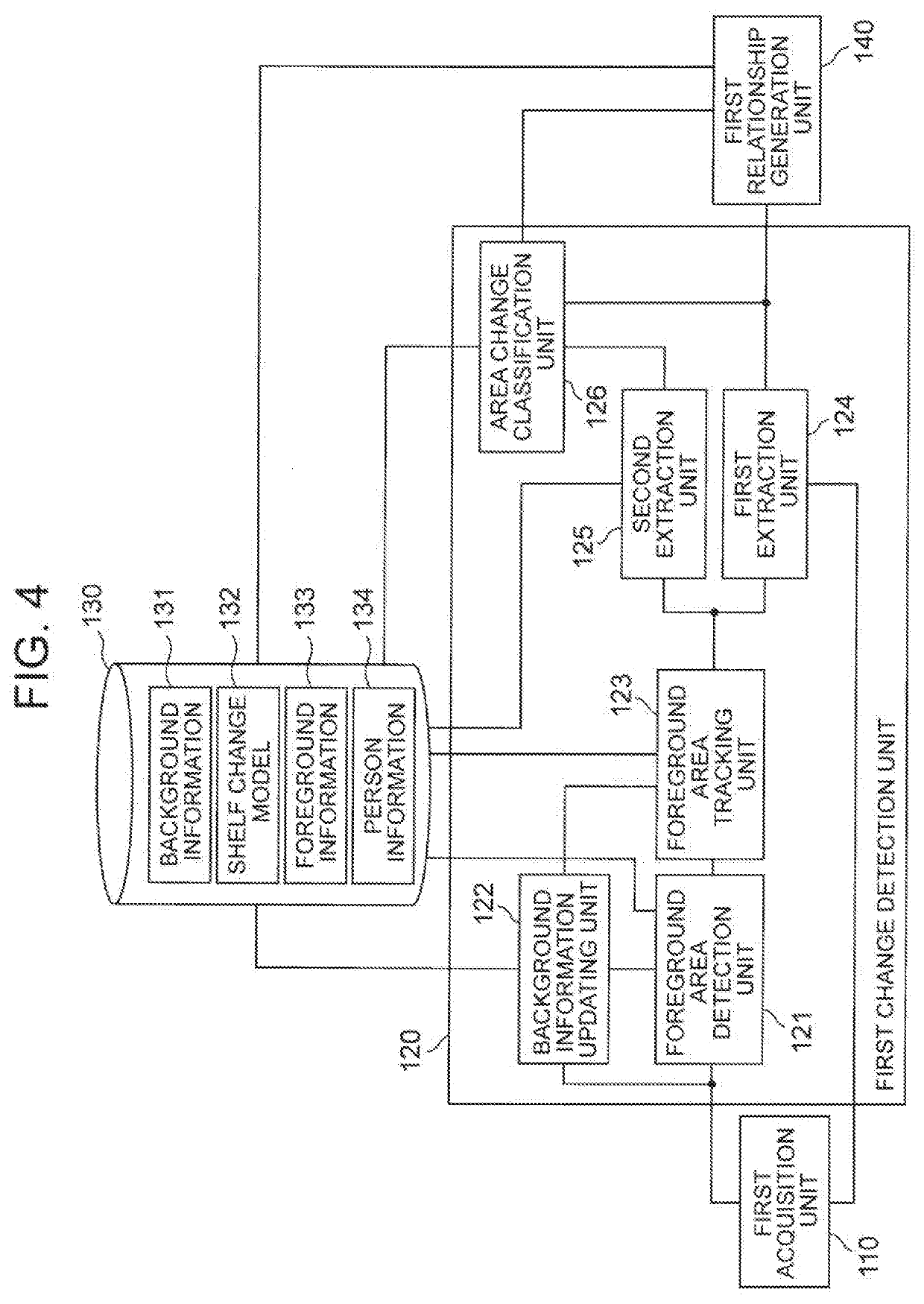Self-checkout system, purchased product management method, and purchased product management program
a self-checkout and product management technology, applied in the field of self-checkout system, can solve problems such as taking time and effort for customers
- Summary
- Abstract
- Description
- Claims
- Application Information
AI Technical Summary
Benefits of technology
Problems solved by technology
Method used
Image
Examples
exemplary embodiment 1
[0048]In the first exemplary embodiment, description will be made on a self-checkout system 1 that manages a list of products that a customer plans to purchase (hereinafter, referred to as “shopping list”) on the basis of a captured image.
[0049]As will be described later, the self-checkout system 1 of this exemplary embodiment detects a change in a product shelf 3 on the basis of a captured image captured by an imaging device 2 and also detects areas of persons and objects that are included in the captured image. Then, the self-checkout system 1 associates the change in the product shelf 3 with an extracted person and integrates the information associated with the person as a reference. Thus, the self-checkout system 1 is configured to associate the change in the product shelf 3 on the basis of the extracted person. As a result, the self-checkout system 1 detects a product that the extracted person intends to purchase.
[0050]FIG. 1 is a block diagram illustrating a configuration exam...
exemplary embodiment 2
[0184]Subsequently, a second exemplary embodiment of the present invention will be described. In the second exemplary embodiment, description will be made on a self-checkout system 1 that monitors product shelves 3 by acquiring different types of images with a plurality of imaging devices 2. In this exemplary embodiment, description will be made on a case where a plurality of imaging devices 2 acquire RGB images and range images. The imaging devices 2 may be, for example, an RGB camera that acquires an RGB image and a depth camera that acquires a range image.
[0185]In this case, the RGB camera and the depth camera are placed in positions close to each other to image the same target (product shelf 3). In addition, the RGB camera and the depth camera are time-synchronized with each other, and it is preferable to image the product shelf 3 at approximately the same time. In other words, the depth camera is preferably a camera that outputs a range image of the imaging range of the RGB ima...
exemplary embodiment 3
[0213]Subsequently, a third exemplary embodiment of the present invention will be described. In the third exemplary embodiment, description will be made on the configuration of the image processing device 100 described in the first exemplary embodiment and further made on an image processing device 300 having a configuration for generating a flow line data of a customer. As will be described later, the image processing device 300 uses the generated flow line data to generate relationship information. Thus, the flow line data of customers can be acquired more accurately, thereby enabling products purchased by customers to be managed properly.
[0214]FIG. 16 is an explanatory diagram illustrating a configuration example of the third exemplary embodiment of the self-checkout system according to the present invention. A self-checkout system 4 of this exemplary embodiment includes an imaging device 5 that images an aisle in a store similarly to a general security camera, in addition to the...
PUM
 Login to view more
Login to view more Abstract
Description
Claims
Application Information
 Login to view more
Login to view more - R&D Engineer
- R&D Manager
- IP Professional
- Industry Leading Data Capabilities
- Powerful AI technology
- Patent DNA Extraction
Browse by: Latest US Patents, China's latest patents, Technical Efficacy Thesaurus, Application Domain, Technology Topic.
© 2024 PatSnap. All rights reserved.Legal|Privacy policy|Modern Slavery Act Transparency Statement|Sitemap



